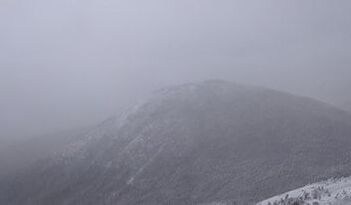 You emerge from a day’s work at the office into darkness. Just a few months ago, hours of light remained, time for an after work softball game, or a picnic or stroll in the park. Whereas darkness covered New York City as late as 9:00 during the summer, with our turning the clock back an hour last week sunset arrives now close to 4:30. And how different does this change in daylight hours feel! Darkness obscures, and with nearly 80 percent of human’s sensory awareness coming from sight, the diminished light can reduce our understanding of the world around us and induce fear. Consider the nocturnal demons of folklore—witches, ghosts, and other creatures. Indeed, “nightmare” derives from the Germanic and Slavic folklore’s concept of the “mare”, a malicious creature that rides on people chests while they sleep and brings them bad dreams. Yet, if darkness diminishes visual awareness, it can heighten other sensory awareness. Touch is felt more acutely, as in the feeling of chilled air on one’s face, and the awareness of pavement underfoot with every step. One’s sense of proprioception, how our bodies move through space, is heightened to the point where running in the darkness can evoke a sensation of rhythmic floating. Hearing too is heightened. Wind blowing through the trees is heard more clearly than it likely would be in broad daylight. We hear our footsteps and those of others. So too, insight intensifies, even in how dreams bring wisdom. And, in fact, our eyes do function in the darkness, even in the absence of street lamps. There is much was can see and discern as we let our eyes adjust and overcome fear of the darkness. With even a little moonlight, we can see the outlines of trees against the sky, the vegetation around us, and the path ahead of us. In just over a month we will arrive at the winter solstice, and the daylight hours will grow longer, just as we enter into the depths of winter, a strange equipoise: winter’s emerging chill concurrent with the days’ growing light, and six months later, summer’s emerging warmth concurrent with the days’ diminishing light. We Grow Accustomed to the Dark Emily Dickinson We grow accustomed to the Dark - When light is put away - As when the Neighbor holds the Lamp To witness her Goodbye - A Moment - We uncertain step For newness of the night - Then - fit our Vision to the Dark - And meet the Road - erect - And so of larger - Darknesses - Those Evenings of the Brain - When not a Moon disclose a sign - Or Star - come out - within - The Bravest - grope a little - And sometimes hit a Tree Directly in the Forehead - But as they learn to see - Either the Darkness alters - Or something in the sight Adjusts itself to Midnight - And Life steps almost straight.
0 Comments
Leave a Reply. |
About this Blog
Hi! I'm Nancy Kopans, founder of Urban Edge Forest Therapy. Join me on an adventure to discover creative ways to connect with nature in your daily life, ways that are inspired by urban surroundings that can reveal unexpected beauty, with the potential to ignite a sense of wonder. Archives
April 2023
Categories
All
|

 RSS Feed
RSS Feed